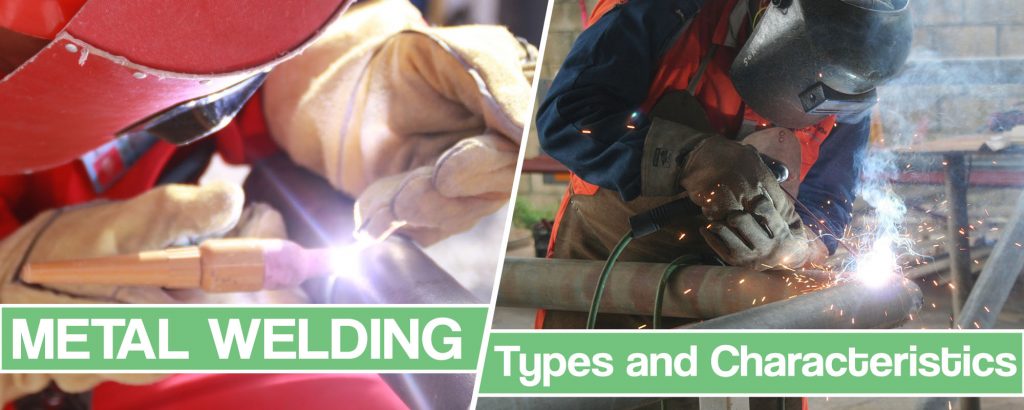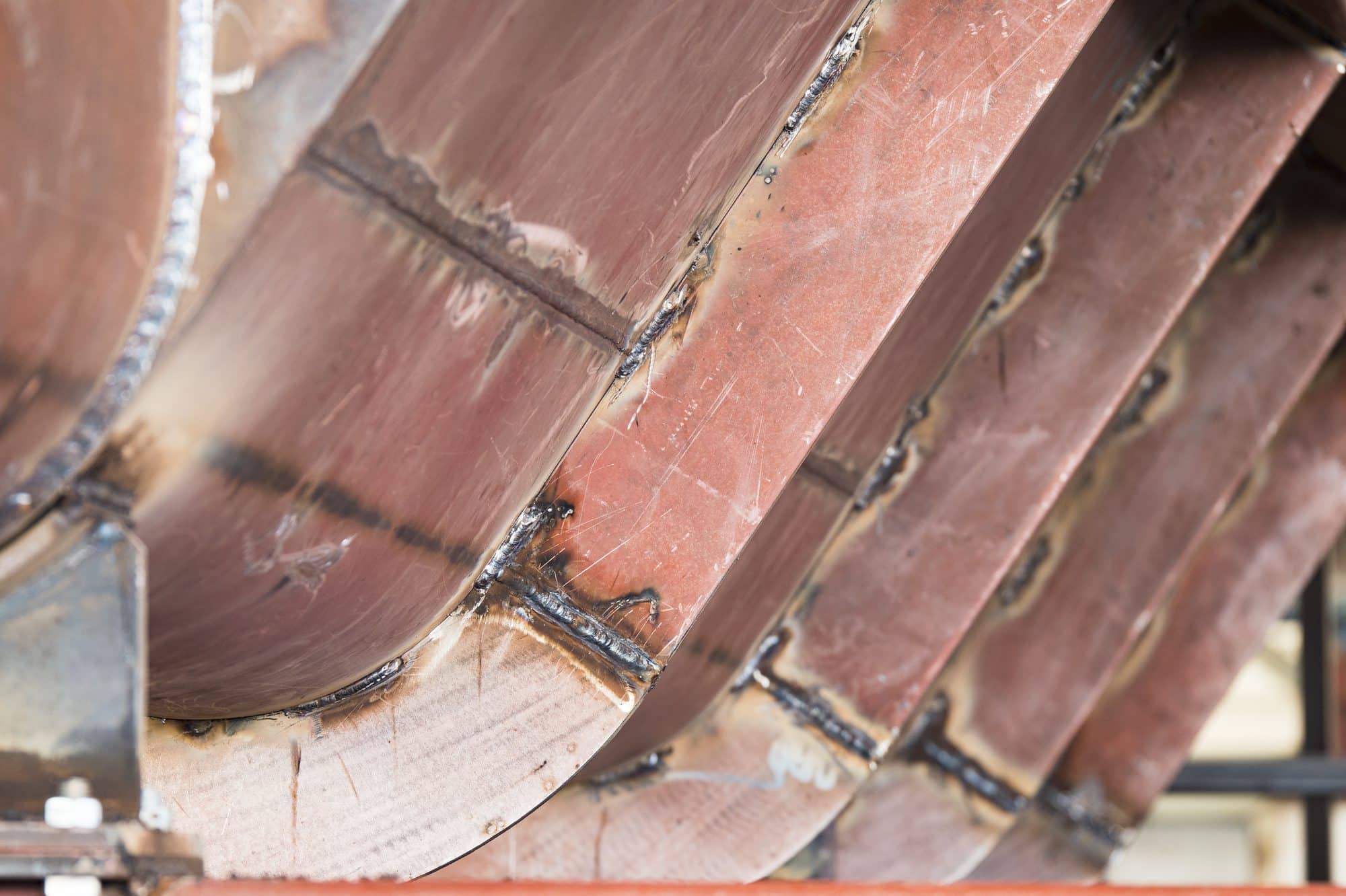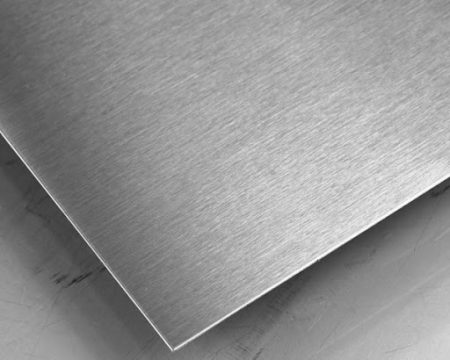Welding is an age-old process that involves joining two pieces of metal together. Through it, we as a species were able to manufacture the majority of the world surrounding us by metal welding.
It is one of the most important industries in the world as it helps us build and expand.

However, there are more types of metals than an average person may recognize. Not all of them are good for manufacturing. Some of them can be easily welded, even by a novice, while others are practically unwearable. This is a story about metal and how to manipulate it best.
Best Metals for Welding
Welding metal is not so simple and combines many factors. To do it properly you have to incorporate metallurgy, the science of electricity, oxidation, and different states of matter. Unfortunately, even by knowing all of these, positive results are not guaranteed. Complications could happen which might lead to failure.
The best metals to use for welding will most likely depend on the project you are working on and the designated budget.
The welding process and the welding skill of the welder also have to be taken into account. Some metals are more weldable than others. There are even some that practically can’t be welded, even with the help of the most advanced methods. Things to take into account when determining the material’s weldability include the welding electrode material, the cooling rate, the welding speed, and shielding gas.
Every metal and its alloys will have different welding preheat requirements that must be followed. Especially when welding exotic materials.
Remember, every metal is unique and comes with its own characteristics.
Table of most commonly used welding methods for different metal and metal alloy types:
| Metal Type/Welding Processes | Stick | MIG | Flux Cored | AC-TIG | DC-TIG | Resistance Spot |
| Mild Steel | ✓ | ✓ | ✓ | ✓ | ✓ | |
| Stainless Steel | ✓ | ✓ | ✓ | ✓ | ✓ | |
| Aluminum | ✓ | ✓ | ✓ | |||
| Cast Iron | ✓ | ✓ | ||||
| Copper/Brass | ✓ | ✓ | ||||
| Nickel | ✓ | ✓ | ||||
| Magnesium Alloys | ✓ | ✓ | ||||
| Titanium | ✓ |
Metal Characteristics
Welders have to understand certain attributes about the metal they plan to work on to do the job properly.
These main characteristics of welding include:
- Ductility
- Electrical conductivity
- Melting point
- Strength
Types Of Welding Metals
As we previously said, not all types of metals can be welded. But the easiest types of metal to weld include:
- Aluminum
- Stainless steel
- Low carbon mild steel
Besides these, people also consider magnesium, cast iron, copper, and nickel alloy as easily weldable.
Low Carbon – Mild Steel
Low carbon mild steel is considered one of the easiest materials to weld. It usually contains less than 0.3% of carbon and up to about 0.4% of manganese.
Due to its low carbon content, this type of material is very ductile, which yields high weldability.
It reduces the chances of brittleness in the heat-affected zone because of which it could become prone to hydrogen cracking.

The good thing about low carbon mild steel is that you can weld it with almost any type of equipment that you have. Unfortunately, it can rust and is prone to flake from oxidation.
Choosing a method depends on the welder’s personal preferences, available equipment, the look of the final results, the welding process cost. Although AC-TIG can be used to weld mild steel it is not recommended as it is best used to weld oxide-producing metals such as aluminum.
Mild steel can be weld by almost all welding methods (MIG, Flux wired, TIG, Stick, Resistance, or Spot welding).
Stainless Steel
Welding stainless steel can be done easily if the correct welding methods and skills are applied. Stainless steel may come with complex chemical composition. However, its corrosion resistance makes it a very useful type of material for various usages.
Applying too much heat can deform stainless steel, affect the strength and the shape of your final product. Additional problems may occur when the chromium found in stainless steel combines with carbon steel during the welding process making the piece more susceptible to rust.
There are actually three types of stainless steel – austenitic, ferritic, and martensitic. Ferritic and austenitic types are more weldable as opposed to the martensitic which is considered the most difficult one to weld.
Stainless steel welding methods vary depending on the form, thickness of the material, final results, as well as use of the final product. The most common stainless steel welding methods are:
- TIG (GTAW) is the most common stainless steel welding process, low heat output makes it great for thinner materials,
- Resistance (Spot) welding is considered an economical method to weld stainless steel, it is best used on materials with low melting points,
- MIG (GMAW) method is one of the easier ways to weld stainless steel, it uses argon rich shielding gas.
Aluminum
Steel aluminum can be a bit tricky to weld but is entirely possible to do with proper welding skills. The most important thing to consider here is selecting the right grade of aluminum.
Aluminum has high thermal conductivity, which allows it to transfer heat away from the weld much quicker. So you should check out the equipment with a higher current which supplies more heat. Also, aluminum shrinks much more than steel, so one has to watch for the base metals in order to avoid crates.

Preparation is key here as aluminum can form an oxide coating. This can cause contamination to the base metal. So removing it beforehand will reduce porosity. There are several methods that people use to weld aluminum. The most common aluminum and aluminum alloys welding methods are:
- Arc welding, best used to join aluminum alloy grades 1xxx, 3xxx, 5xxx, 6xxx and medium strength 7xxx alloys,
- The AC-TIG welding process is very clean and it protects the aluminum from being compromised by the atmosphere,
- MIG welding process is best used to join thin aluminum gauges such as aluminum sheets, pure argon is best used as shielding gas.
More on TIG welding aluminum here
Other Metal Types That Are Weldable
There are some other metal types of metal that can be welded, but usually require special skills and equipment to handle. They include magnesium, copper, cast iron, titanium, and certain superalloys like Inconel. Unfortunately, since they are a bit more difficult to handle than your standard types of metal you will rarely find hobbyists or traditional shops working on them.
Copper
Copper is a popular material as it possesses electrical and heat conductivity, corrosion and wear resistance, and has a unique appearance. It has to possess at least 99.3% of copper content to be identified as copper.
There are multiple types of copper and people use a variety of methods to weld it. The most common ones are Gas Tungsten Arc Welding (TIG Welding) and Gas Metal Arc Welding, while the most utilized shielding gas is Argon
When welding copper, the joint design needs to be wider as opposed to welding steel. Additionally, you don’t need to preheat due to its high levels of thermal conductivity.
Cast Iron
Cast iron is very difficult to weld, but not impossible. However, when welders work on cast iron it is usually due to repairs and not to join pieces together. Cast iron possesses around 2% to 4% of carbon content, which is around 10 more of the amount found in steel. Due to the high carbon content, it creates flakes of graphite, which is the cause of its characteristic look.
Can be welded with:
- Stick Welding (SMAW) – using nickel welding rods, pre-heating, and controlled cooling after welding is done might be necessary.
- Gas Welding – with preheating and controlled cooling.
- MIG welding – but the result won’t be comparable in quality with the previous methods
Nickel Alloys
There are several nickel alloys (Ni-Cu alloys and the simpler Fe-Ni-Cr alloys) and they are grouped based on their principal elements.
Because of that, there are many welding processes used to work on them. The most commonly used ones are still MIG welding and TIG welding. However, flux-cored welding techniques like the Manual Metal Arc welding process (Stick Welding) and Submerged Arc welding (SAW) are also used.
In most cases, post-weld heat treatment to establish corrosion resistance is not required. However, thermal treatment should be done to avoid stress corrosion cracking.
Magnesium
Magnesium is a lightweight material and can be welded by using various arc welding and resistance welding processes. Magnesium resembles aluminum in so many ways as it has the same melting point and other similarities. Usually, it is welded using a TIG welder.
It can absorb vibration and is very easy to cast as well as brazid. Magnesium is produced with different tempers which are chosen based on heat treatment and work hardening. An important thing to note is that a welder has to be careful when grinding magnesium as the shavings are flammable.
Can be welded with:
- Gas metal arc welding – recommended for thick plates and because recrystallization and grain growth in the heat-affected zone is minimized due to the high speeds of a welding process.
- Gas tungsten arc welding – recommended for thin sheet magnesium plates, short arc should be used as with aluminum welding
- Oxyfuel gas welding – welded and brazed
Titanium
The most important components of many machines are made of titanium that is considered one of the toughest yet extremely light and extreme corrosion-resistant metal fund in the world today ad to that. Used in many industries most prominent in the airplane industry.
Titanium is hard to weld and usually only the experienced and tested welders are allowed to perform welds and repairs on titanium parts. Its weld only with TIG welding machines and on direct current. The problem with welding titanium is its reaction with oxygen.
When during welding the metal temperature exceeds 500- to 800-degrees Fahrenheit. That reaction leads to loss of corrosion resistance rendering it useless. Read more about it here. Commonly used welding methods for the different metal and metal alloy types.
Conclusion
Metalwork and meal welding is not going anywhere. Some may view it as a dirty job or an ancient method for creating products, but it is a highly efficient and necessary method. Without it, much of the world around us wouldn’t have existed. In fact, societies have been built based on the ability to successfully join two pieces of metal together.
Whether you are stick welding, using a Shielded Metal Arc welding process, or welding GTAW, knowing at least one method is favorable for metal production. Since a lot of these processes are used for various types of materials, knowing one can expand a person’s horizons.
Metal welding remains a part of our industry and will only continue to expand as we evolve.
- Properties of metals affected by welding https://www.longevity-inc.com/welding-articles/post/properties-of-metals-affected-by-welding-and-heat/
- About welding metals https://www.industrialmetalsupply.com/blog/best-metals-for-welding
- Welding Magnesium alloys http://www.totalmateria.com/Article35.htm#:~:text=The%20gas%20tungsten%20arc%20welding,however%2C%20there%20is%20considerable%20overlap
- Weldability of Nickel https://www.twi-global.com/technical-knowledge/job-knowledge/weldability-of-materials-nickel-and-nickel-alloys-022
- Cast Iron welding techniques https://www.lincolnelectric.com/en-us/support/welding-how-to/Pages/welding-cast-iron-detail.aspx
- Copper welding techniques https://www.brazing.com/Support/Procedures_and_techniques/CopperWeldingProcedures.aspx





